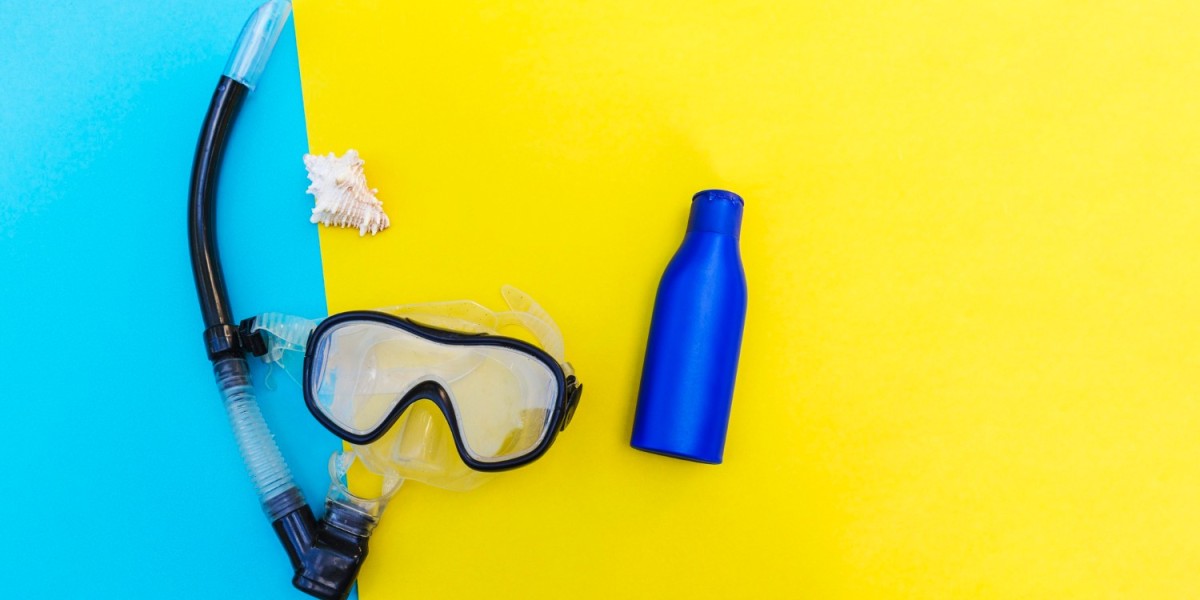Swimming is a fantastic exercise for people of all ages and fitness levels. Whether you're a seasoned swimmer or just starting out, having the right accessories can make your swimming experience more enjoyable and effective. In this blog post, we'll discuss some of the essential swimming accessories you should consider purchasing.
1. Goggles
Goggles are a must-have for any swimmer. They protect your eyes from chlorine and other irritants in the water, and they also help you see underwater more clearly. When choosing goggles, it's important to get a pair that fits snugly and comfortably. You should also consider the type of lens. Some goggles have mirrored lenses that reduce glare, while others have clear lenses that provide better visibility in low-light conditions.
Additionally, look for goggles with UV protection to shield your eyes from harmful sun rays, especially when swimming outdoors. If you're prone to fogging, consider anti-fog goggles or a fog-resistant spray.
2. Swim Cap
A swim cap serves several purposes. It lessens drag in the water and keeps your hair out of your face. Swim caps come in a range of materials, such as Lycra, silicone, and latex. Silicone caps are the most popular choice because they are durable, comfortable, and easy to clean.
Furthermore, swim caps help to keep your hair dry and prevent chlorine damage. They also help to reduce the amount of time it takes to dry your hair after swimming. When choosing a swim cap, consider your hair length and thickness. A larger cap may be needed for longer or thicker hair.
3. Swimsuit
Your swimsuit should be comfortable and supportive. It should also fit well and not chafe your skin. When choosing a swimsuit, it's important to consider your body type and the type of swimming you'll be doing. For example, if you're a competitive swimmer, you'll need a swimsuit that is designed for speed and performance.
Additionally, consider the material of the swimsuit. Some materials, such as nylon and polyester, are more chlorine-resistant than others. If you're swimming in cold water, you may want to consider a neoprene swimsuit for added warmth.
4. Swim Fins
Swim fins are used to improve your leg strength and propulsion. They are also helpful for practicing proper kick technique. Swim fins are available in a variety of sizes and materials. When choosing swim fins, it's important to get a pair that fits well and is comfortable to wear for extended periods of time.
Furthermore, swim fins can help to improve your overall swimming efficiency. They can also be used for water aerobics and other aquatic exercises. When choosing swim fins, consider your skill level and the type of swimming you'll be doing. Short fins are good for beginners, while longer fins are better for experienced swimmers.
5. Pull Buoy
A pull buoy is a flotation device that is used to isolate your upper body during swimming drills. It is helpful for improving your arm strength and stroke technique. Pull buoys are available in a variety of shapes and sizes. When choosing a pull buoy, it's important to get one that is comfortable and easy to use.
Additionally, pull buoys can help to improve your body position in the water. They can also be used for water aerobics and other aquatic exercises. When choosing a pull buoy, consider your skill level and the type of swimming you'll be doing. A smaller pull buoy may be better for beginners, while a larger pull buoy may be better for experienced swimmers.
6. Kickboard
A kickboard is a flotation device that is used to isolate your lower body during swimming drills. It is helpful for improving your leg strength and kick technique. There are numerous sizes and shapes for skateboards. When choosing a kickboard, it's important to get one that is comfortable and easy to use.
Furthermore, kickboards can help to improve your body position in the water. They can also be used for water aerobics and other aquatic exercises. When choosing a kickboard, consider your skill level and the type of swimming you'll be doing. A smaller kickboard may be better for beginners, while a larger kickboard may be better for experienced swimmers.
7. Paddleboard
A paddleboard is a flotation device that is used to isolate your upper body during swimming drills. It is helpful for improving your arm strength and stroke technique. Paddleboards are available in a variety of shapes and sizes. When choosing a paddleboard, it's important to get one that is comfortable and easy to use.
Additionally, paddleboards can help to improve your body position in the water. They can also be used for water aerobics and other aquatic exercises. When choosing a paddleboard, consider your skill level and the type of swimming you'll be doing. A smaller paddleboard may be better for beginners, while a larger paddleboard may be better for experienced swimmers.
Conclusion
Having the right swimming accessories can make a significant difference in your overall swimming experience. By investing in quality equipment, you can improve your performance, reduce your risk of injury, and have more fun in the water.
From goggles and swim caps to swim fins and pull buoys, there are a variety of accessories to choose from. Remember to consider your individual needs and preferences when selecting swimming gear. For example, if you're a competitive swimmer, you may want to invest in high-performance equipment, while casual swimmers may opt for more basic accessories.
Additionally, don't forget the importance of proper maintenance. Regularly clean and store your swimming accessories to ensure their longevity and performance. And for those who enjoy a healthy lifestyle, consider packing portable juicers to make fresh fruit and vegetable juices before or after your swim.








